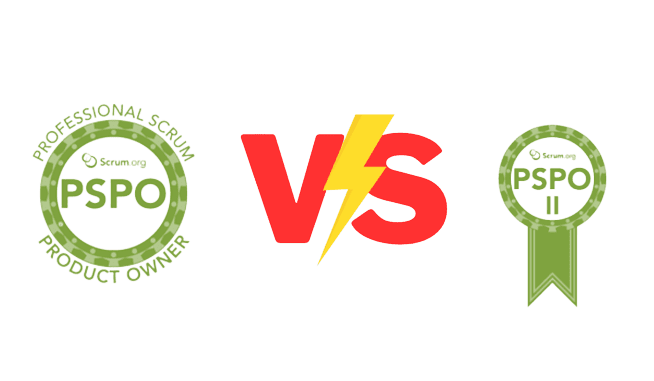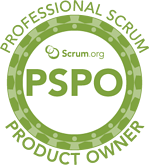Scrum is a popular framework used in project management and software development. It has two courses for product owners: PSPo (Professional Scrum Product Owner) and PSPo 2. In this blog, we’ll look at these two courses, what they cover, and help you decide which one is right for you.
PSPo: The Basics
1. Course Content:
- PSPo is like a beginner’s course for product owners. It teaches you the core principles and practices of Scrum and your role as a product owner.
- You’ll learn about managing the product backlog, creating a vision, and setting priorities.
2. Certification:
- After finishing the PSPo course, you can take a test to get the PSPo certification. It shows that you understand the basics of Scrum and being a product owner.
3. Focus on Fundamentals:
- PSPo is all about giving you a strong foundation in Scrum. It’s perfect if you’re new to being a product owner or new to Scrum.
PSPo 2: Going Deeper
1. Course Content:
- PSPo 2 is like an advanced course for product owners. It goes deeper into Scrum and product ownership.
- It covers complex topics like dealing with stakeholders, product strategy, and advanced ways to manage the product backlog.
2. Certification:
- Just like PSPo, finishing the PSPo 2 course lets you take a test and earn the PSPo 2 certification. This certification shows you understand Scrum and product ownership on an advanced level.
3. Focus on Advanced Stuff:
- PSPo 2 is for experienced product owners who want to get really good at their job. It’s all about advanced ideas and strategies for managing product development.
Comparing PSPo and PSPo 2
Now, let’s see how PSPo and PSPo 2 are different and similar:
- What They Teach:
- PSPo: Covers the basics of Scrum and product ownership.
- PSPo 2: Gets into more advanced Scrum and product owner stuff.
- Certification:
- PSPo: You get the PSPo certification, which means you understand the basics.
- PSPo 2: You earn the PSPo 2 certification, which shows you’re an advanced expert.
- Who They’re For:
- PSPo: Great for beginners, especially if you’re new to being a product owner.
- PSPo 2: Perfect if you’ve been a product owner for a while and want to get really good at it.
- What You Learn:
- PSPo: It’s all about the basics like managing the backlog and setting priorities.
- PSPo 2: You’ll dig deep into complex topics like dealing with stakeholders, product strategy, and advanced backlog management.
- Requirements:
- PSPo: You can take this course without any special requirements.
- PSPo 2: While PSPo certification is recommended, it’s not mandatory. PSPo 2 is for experienced product owners.
Choosing Between PSPo and PSPo 2
Deciding between PSPo and PSPo 2 depends on your experience level and what you want to achieve as a product owner. Here are some tips to help you choose:
Pick PSPo if:
- You’re new to being a product owner and Scrum, and you want to build a strong foundation.
- You need to learn the basics of Scrum and your role as a product owner.
- You plan to take things step by step and might think about advanced training later.
Choose PSPo 2 if:
- You’ve been a product owner for a while and you want to become a pro.
- You’re ready to tackle advanced challenges and master complex product owner concepts.
- You’re committed to improving your skills and becoming a top-notch product owner.
In summary, both PSPo and PSPo 2 have their own purposes, and they’re meant for different points in your journey as a product owner. PSPo is all about building a solid base, while PSPo 2 is for experienced product owners looking to reach new heights. Your choice should match your experience and your career goals. Whether you go for PSPo or PSPo 2, both certifications will boost your abilities as a product owner in the world of Scrum and agile development.












